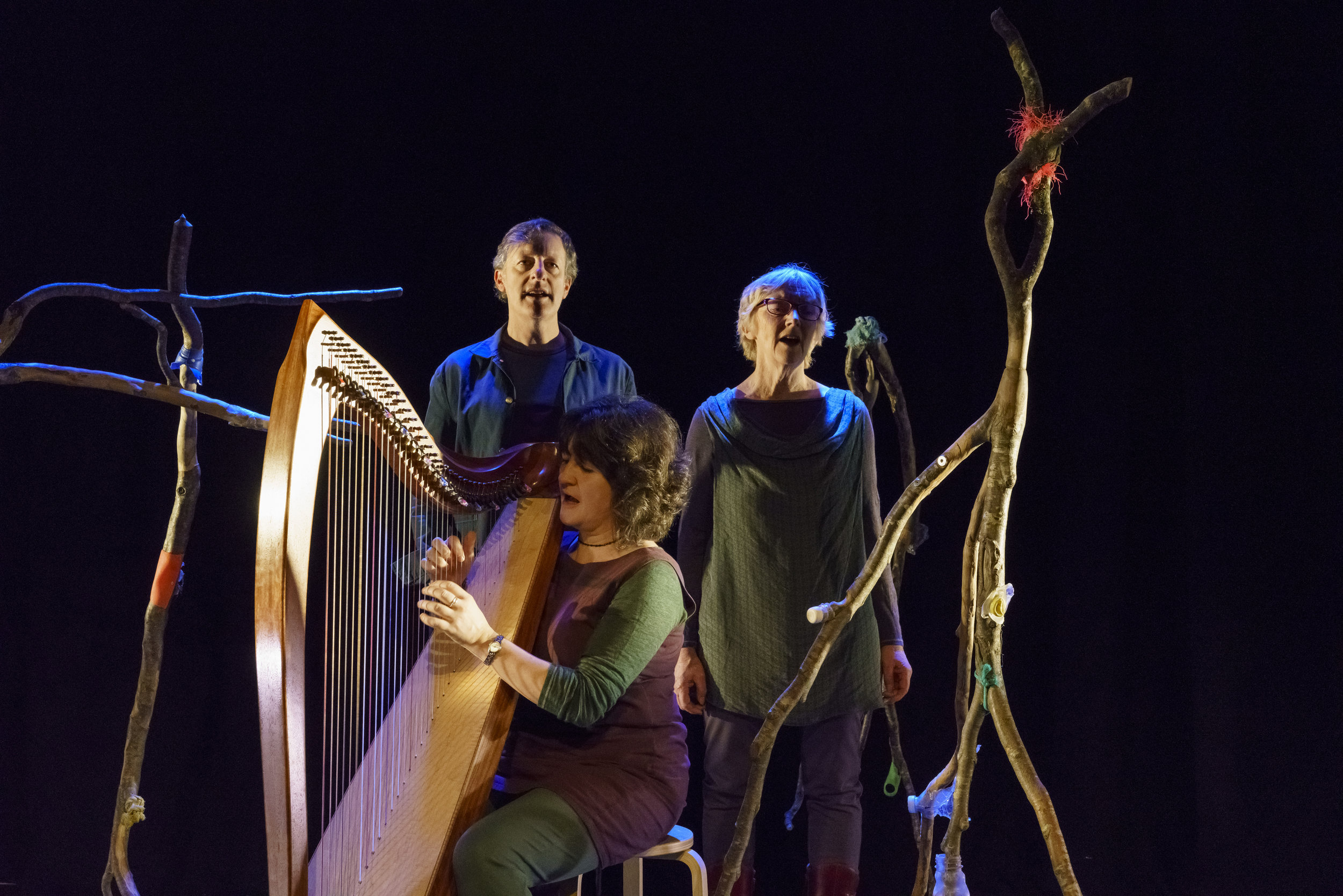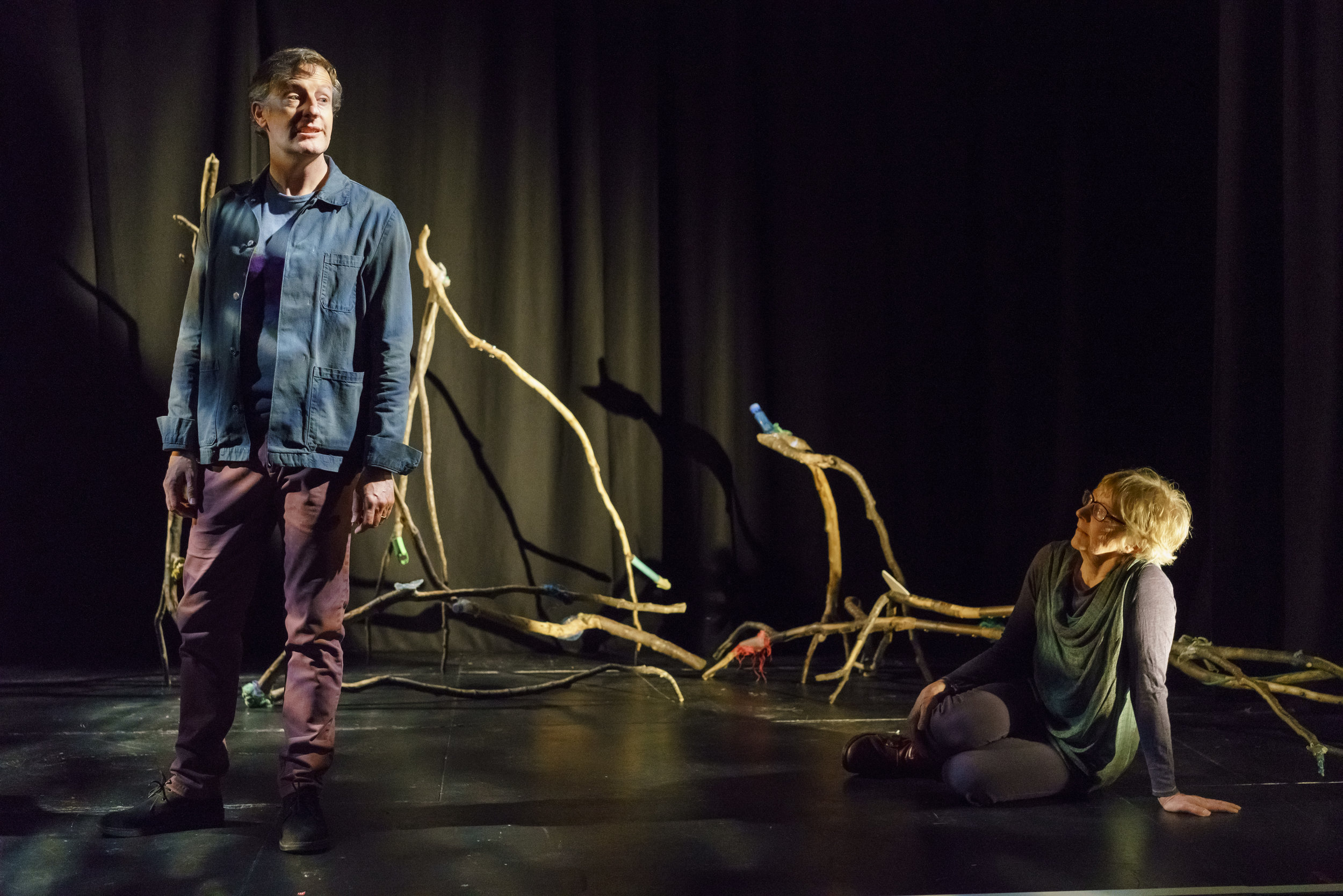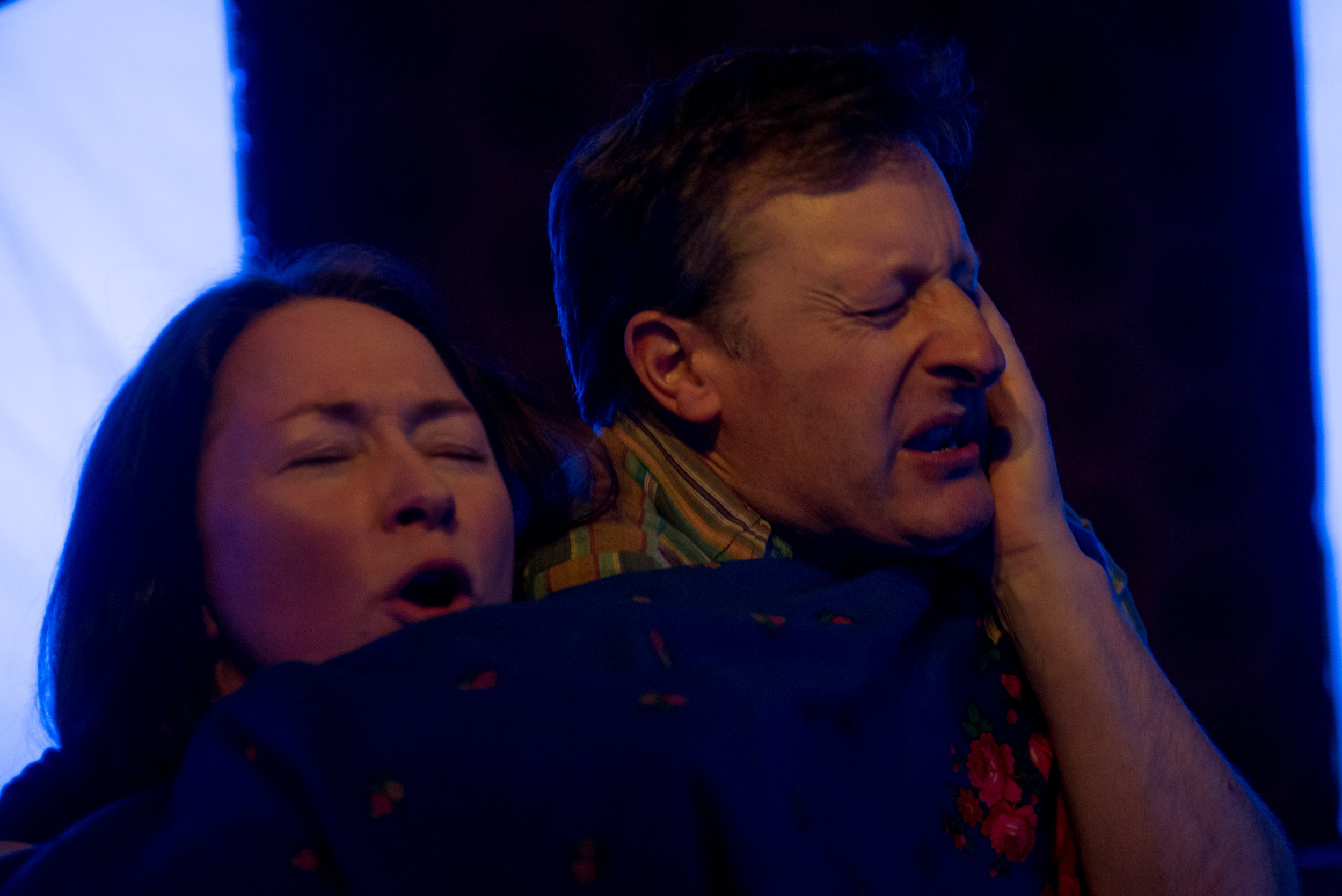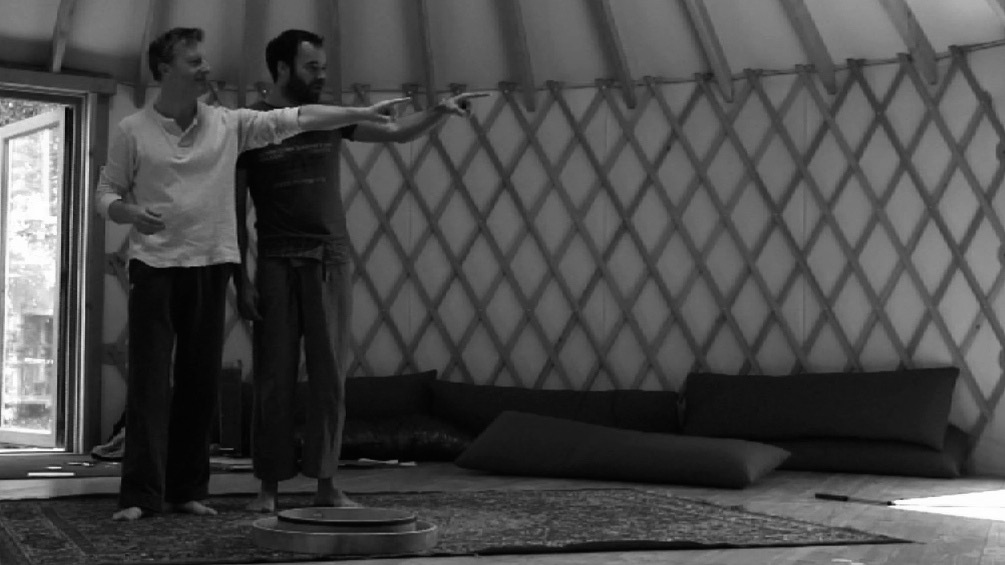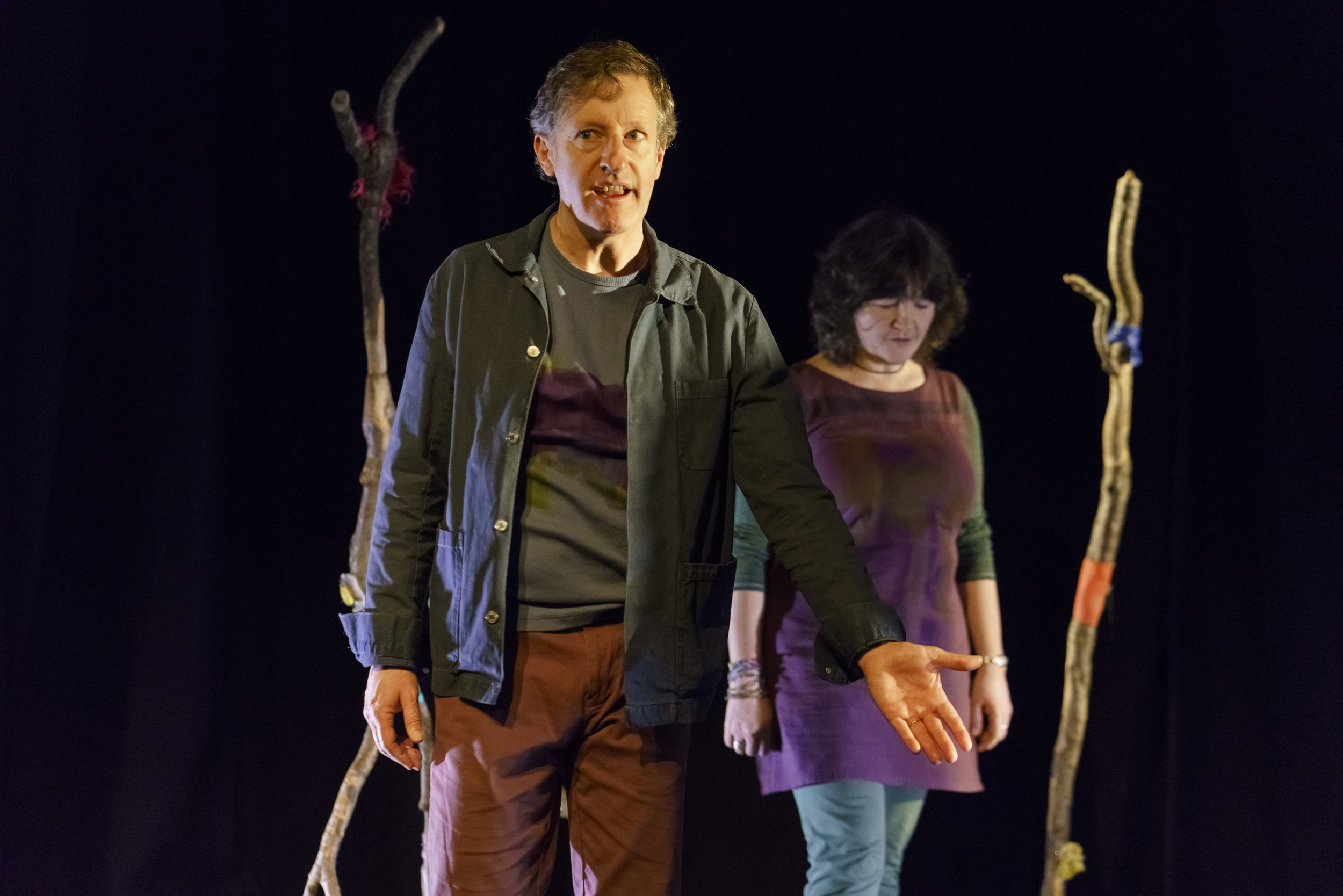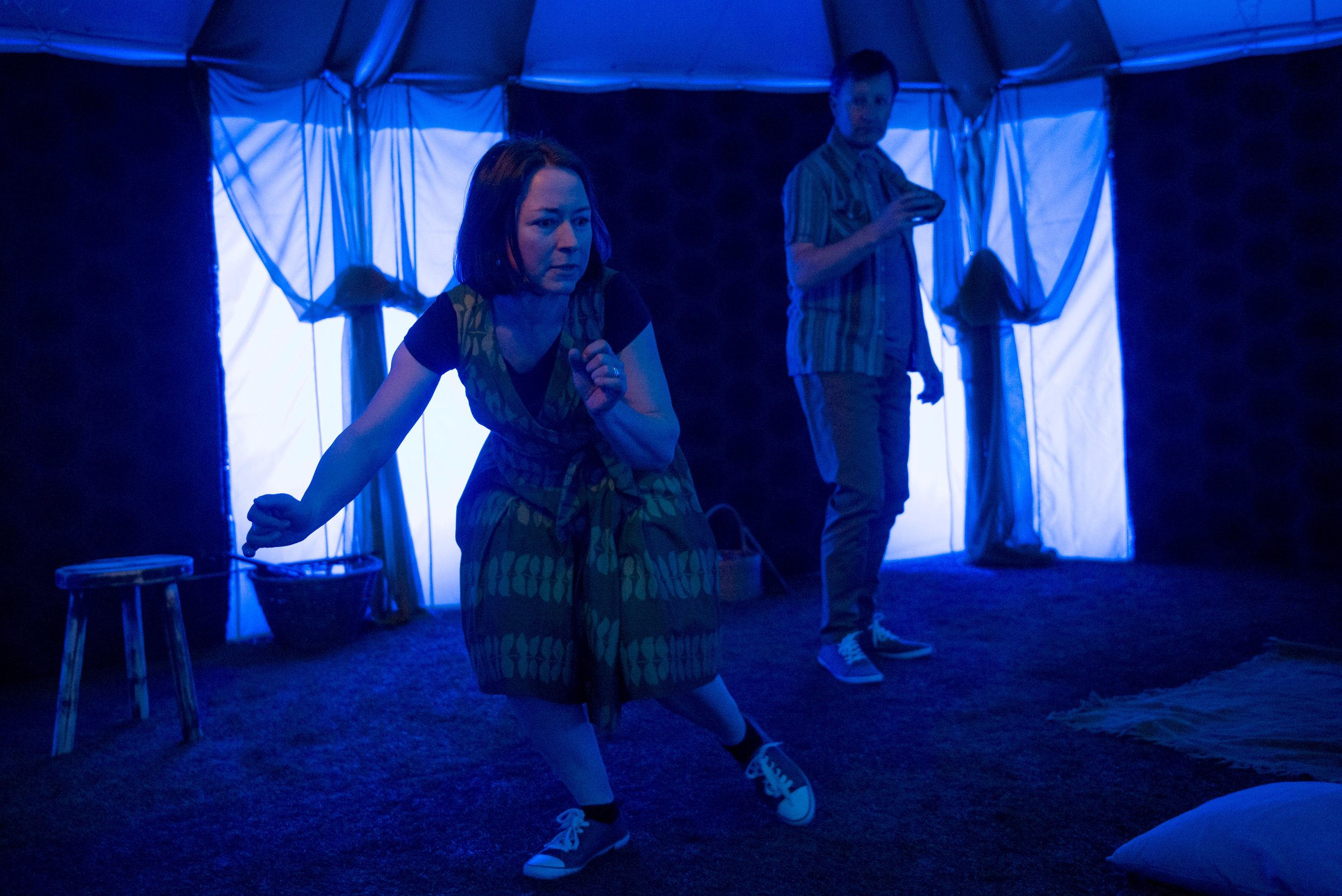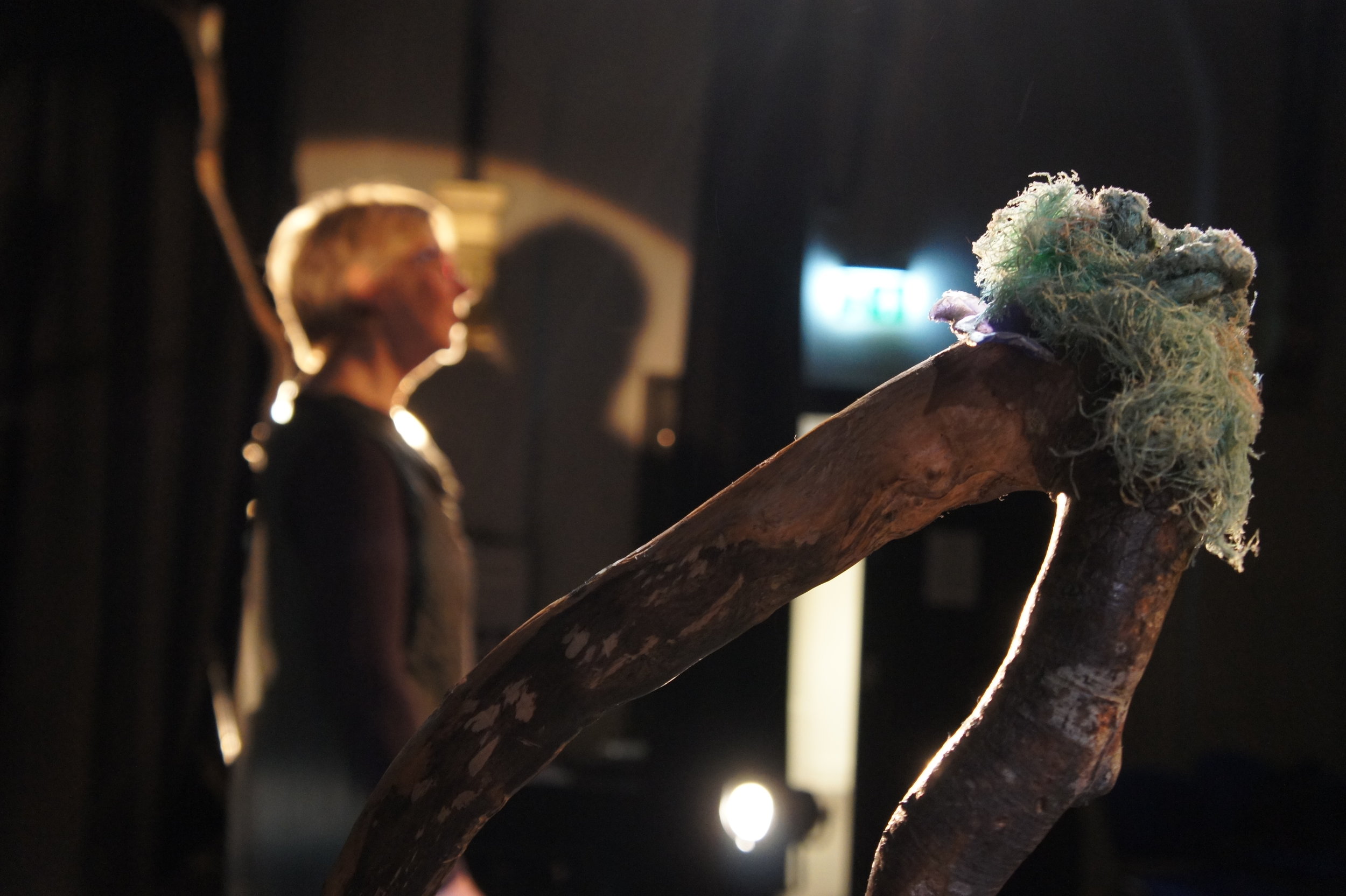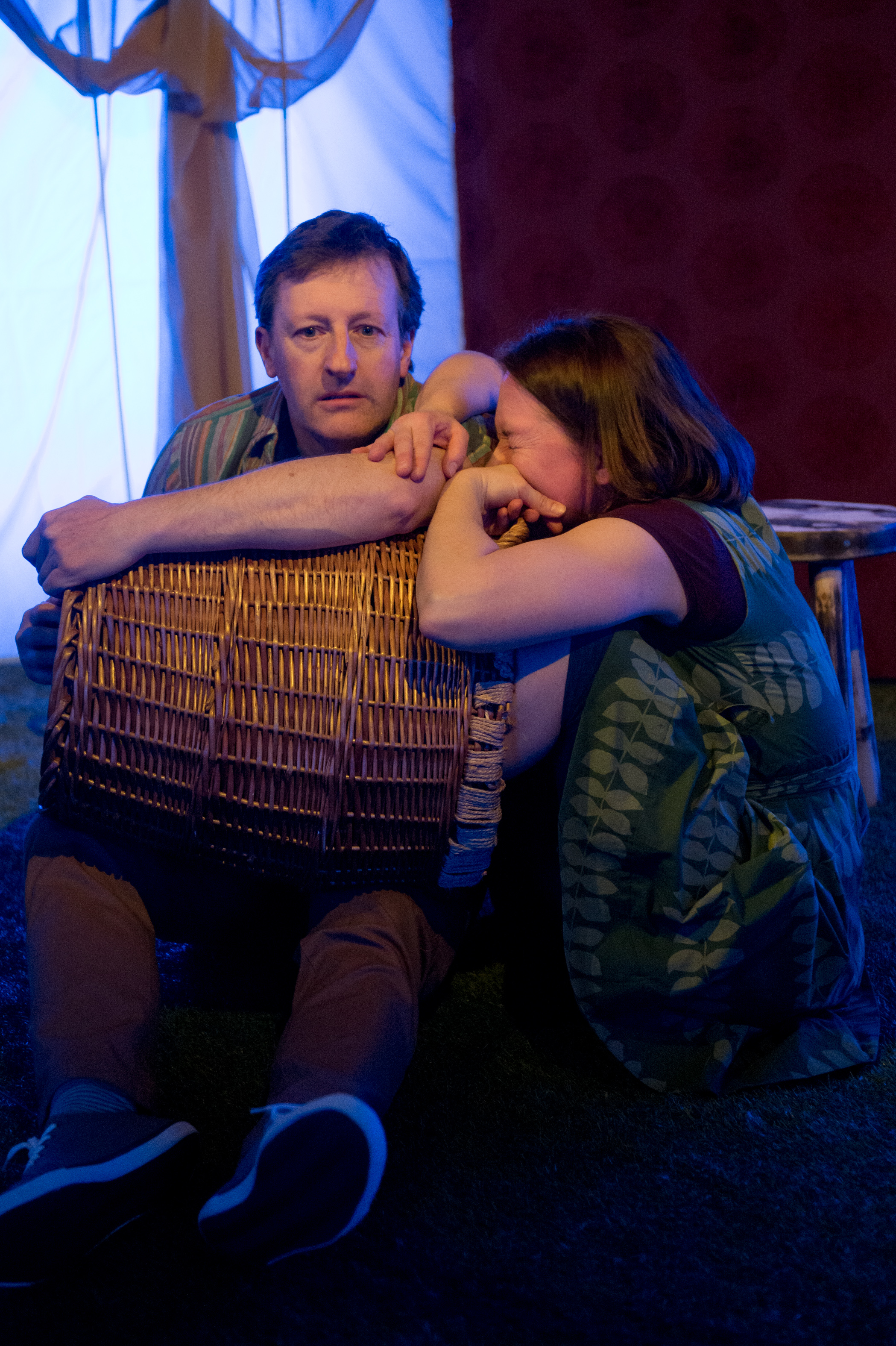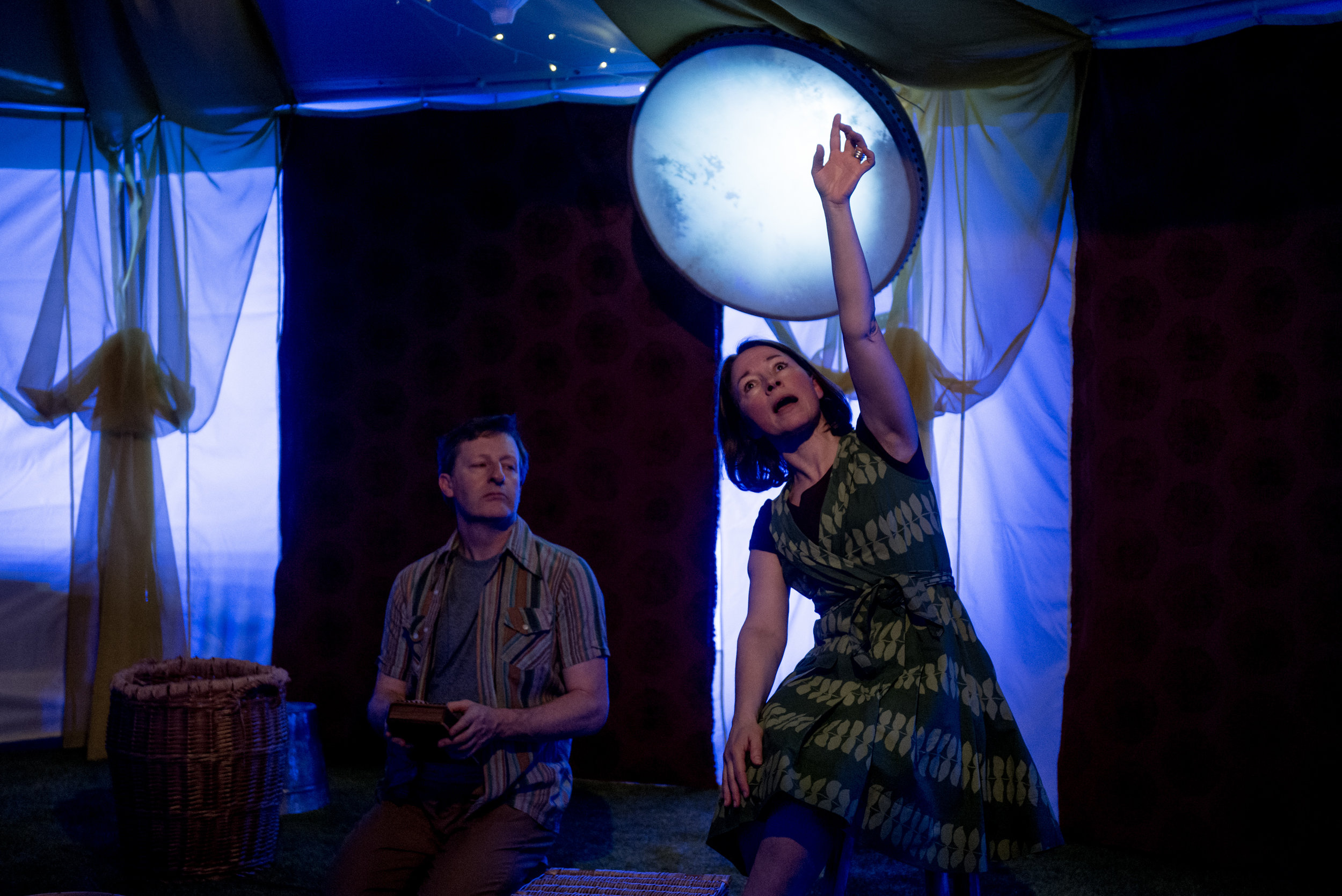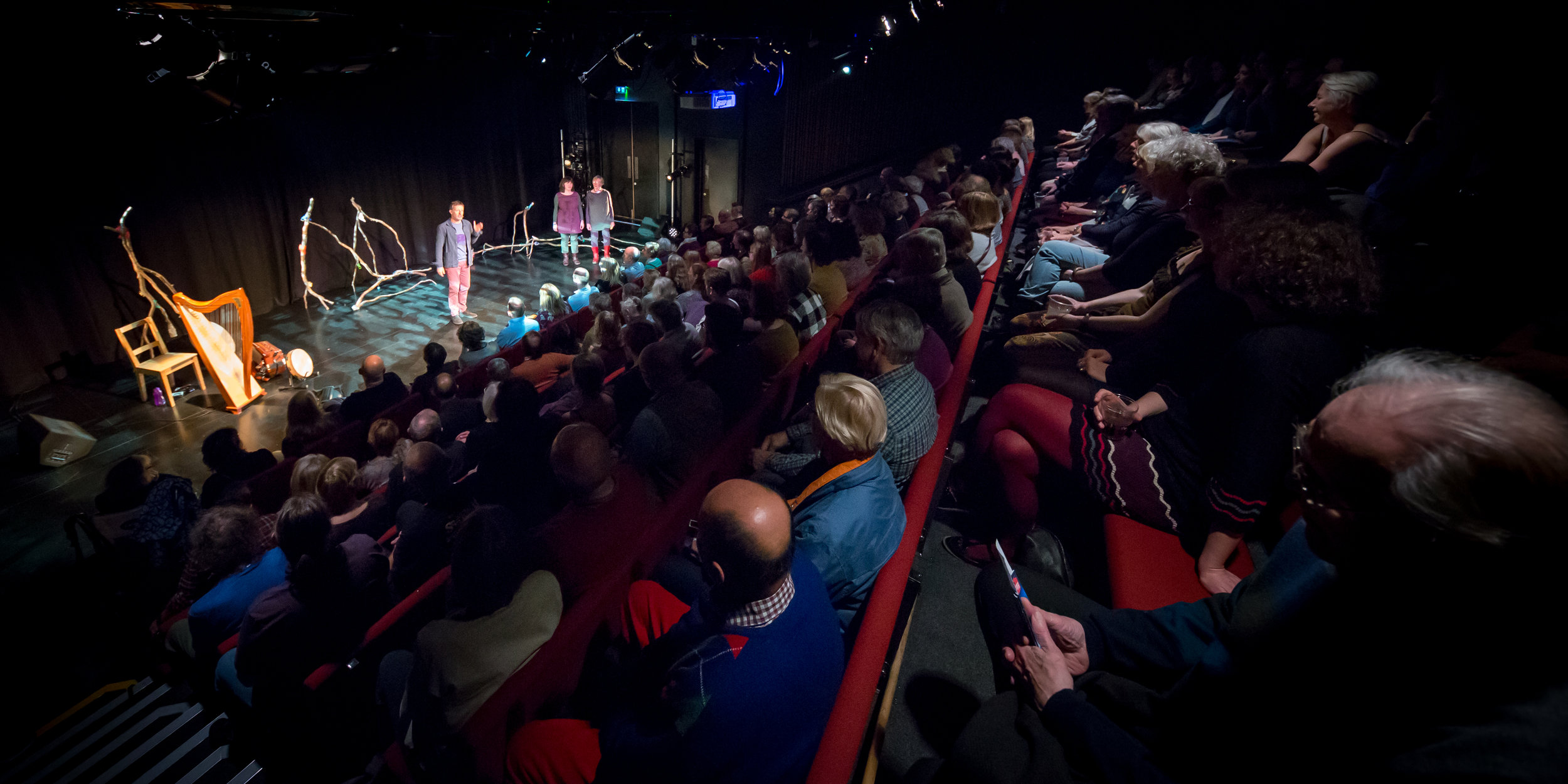staging the story
Strange things happen when you step out into more formal performances spaces and we need to understand how the bigger space, lighting and the audience behaviour of a more theatrical presentation is different from the classroom, club or pub setting and use that to our advantage in order to help the power and intimacy of storytelling happen in these, more formal, spaces.
Once we have an understanding of theatrical space we are able to use, subvert and enjoy it in order to bring new possibilities to our performance that are not viable in more intimate environments, including working with several tellers on stage on the same story, more considered and expansive physicality and dynamic use of space
I wrote a seminar research paper called Staging the Story a few years ago for the George Ewart Evans Centre for Storytelling at the University of South Wales. It covers most of the issues of putting stories on stage and contains observations and suggestions for dealing with the interface between storytelling and theatrical conventions and ways of working. You can access the paper here.
Some of the new possibilities that we have in more theatrical spaces include…
Space We have a lot more room to move in but how do we stop ourselves just wandering around? We will look at ways to inhabit the space meaningfully and playfully.
Relationship with the audience They are much further away, sitting in straight lines and may be sitting in the dark. The stories need the active attention and engagement of the audience and we will be working on how to get it.
Back to Basics The theatre is seductive and we need to remember what our core skills and ways of working are and keep them at the heart of our work
Telling Together The extra space is an invitation to have more than one teller on stage telling at a time. This can be a really dynamic and intuitive way of working but we need to know how to work in a way that keeps us improvising as we tell. We will be using simple and practical exercises and techniques to do this.
Flowing instead of Blocking One of the biggest traps is to look at the work from the outside and start to impose moves, words and cues. If this method takes hold the work becomes predictable and dull. We will be looking at how to keep solo, duo and ensemble storytelling work fresh, surprising and real on stage.


